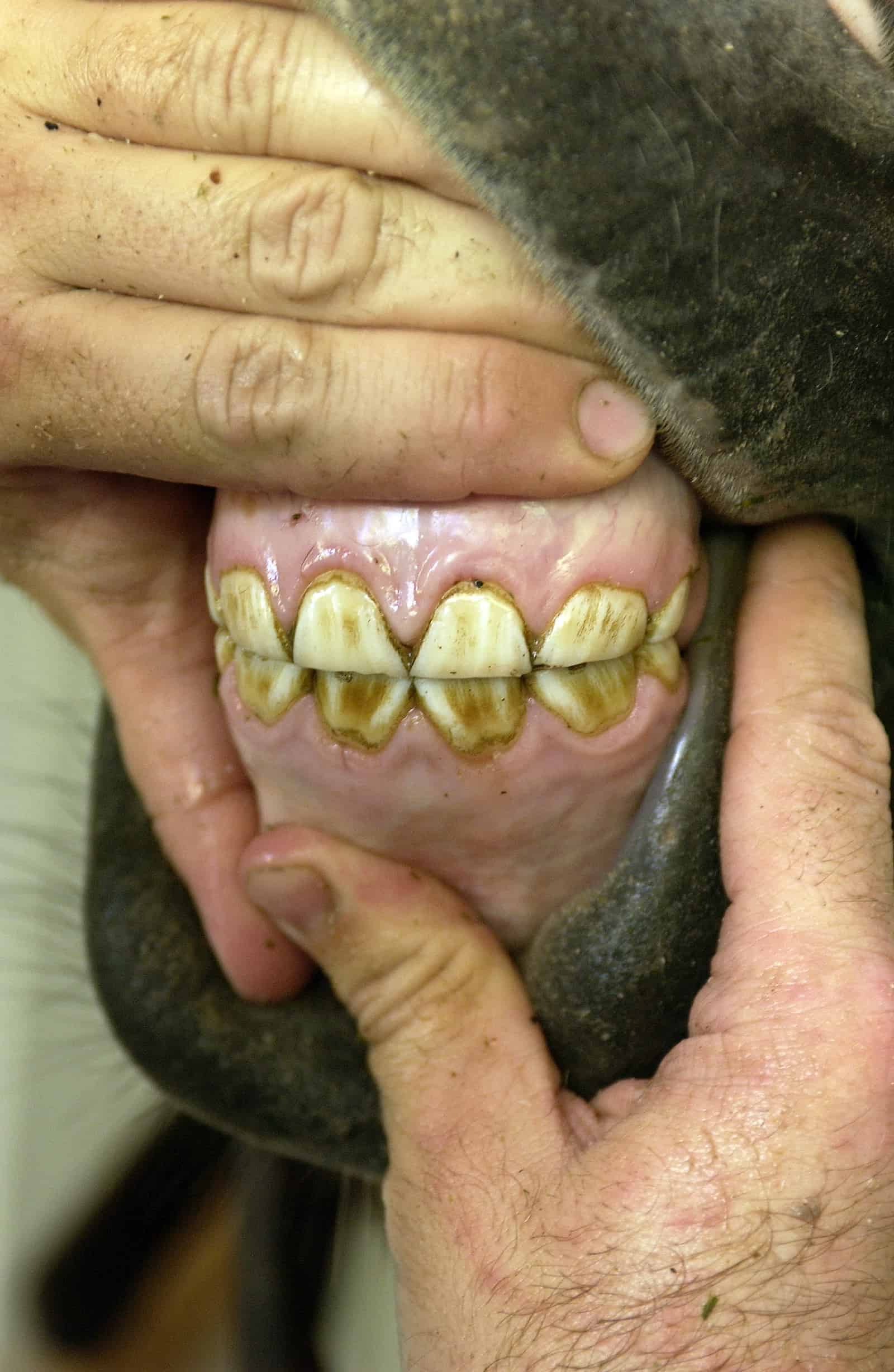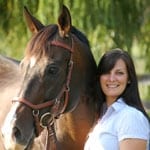Minding the Great Tooth Transition in Horses

To address some common concerns veterinarians face, Lynn A. Caldwell, DVM, offered tips on managing deciduous, canine, and wolf teeth in young horses at the 2016 American Association of Equine Practitioners’ Convention, held Dec. 3-7 in Orlando, Florida. She owns Silverton Equine Veterinary Services, in Silverton, Oregon, and has focused on equine dentistry for most of her career.
Caldwell’s top take-homes:
Know the horse’s tooth eruption and exfoliation schedule.
Several deciduous teeth are present at or shortly after birth, while others come in within the first years of life. Some remain until the horse is about 4 ½ years old (and possibly longer in donkeys and draft breeds, Caldwell said). A good understanding of how and when horses’ baby teeth shed (exfoliate) and permanent teeth grow in (erupt) can help reduce the likelihood of a young horse developing a variety of dental issues.
“Permanent teeth develop in a dental follicle or sac just underneath the root of the primary teeth,” Caldwell said. That dental follicle contains the secondary tooth with its developing dentin and enamel along with blood vessels, which nourish the developing tooth. The deciduous teeth offer some protection to the secondary teeth as they develop.
“Infection or loss of the primary tooth may damage the developing secondary tooth because of the intimate proximity of the two structures,” Caldwell said. As such, if you notice a loose deciduous tooth long before the secondary tooth is due to erupt, call your veterinarian for evaluation.
Don’t float deciduous teeth heavily, especially incisors.
Caldwell said veterinarians can remove sharp points from young horses’ check teeth with judicious floating, but she cautioned against taking much, if any, off the incisors.
“Doing so, especially during the eruptive and exfoliative phase, can place too much occlusal pressure on the newly erupted permanent teeth,” she explained.
This is not to say, however, that young horses don’t require frequent dental exams and care. On the contrary—veterinarians should examine young horses’ teeth regularly to ensure they’re erupting and exfoliating properly.
Don’t remove “caps” before they’re ready to shed and permanent teeth are visible, if possible.
Deciduous teeth that are ready to shed are called “caps,” and they should exfoliate once the secondary tooth is visible underneath it and above the gumline. Removing caps before this time can damage the underlying dental follicle and/or permanent tooth.
“Rupture of the immature dental follicle will stop development of the enamel, prevent proper formation of the gingival attachment, and may result in the loss of the tooth completely,” Caldwell said.
However, removal is likely appropriate for retained caps—those that fail to shed after the secondary tooth erupts, Caldwell said. In most cases, this isn’t a complicated or painful procedure. But if a deciduous tooth has broken or its root hasn’t resorbed, the procedure will likely require gingival anesthesia, she said.
Wolf teeth can be removed or left in place, depending on the owner’s and veterinarian’s opinions.
Not all horses develop wolf teeth, or first premolars, she said. Of those that do, most have two, located on the top jaw, typically just in front of the second premolars. This location means the bit can bang against erupted wolf teeth and even cause discomfort for unerupted wolf teeth.
Historically, there have been varying opinions on whether these vestigial structures (meaning they no longer serve a useful purpose) should be removed. Some people prefer to leave them in place, while others would rather extract them so they don’t potentially interfere with the bit.
“The controversy … continues to this day,” Caldwell said, “and it may just be said that it is a matter of the owner and the veterinarian’s decision.”
She said that when veterinarians do extract wolf teeth, the procedure should be performed under local anesthesia. She cautioned attendees that the palatine artery is located near the wolf teeth and “can be easily lacerated by dental instruments, resulting in an impressive loss of blood.”
It takes experience and surgical skill to remove canine teeth properly, especially those on the lower jaw.
Horses’ canine teeth are located between the incisors and premolars on the bars of the mouth and are more common in stallions and geldings than in mares. Deciduous canines might not erupt fully, if at all, while the secondary canines typically erupt between 4 and 6 years of age, Caldwell said. It takes a few years for them to reach their full length of 5-7 centimeters, she added.
Like wolf teeth, these long and sharp teeth no longer have a purpose in domestic horses; historically and in wild or feral horses, they serve a role in male combat. But the nature of these teeth can be problematic for domestic horses, as they can interfere with bit placement in a horse’s mouth.
“Judicious crown reduction of the canine teeth is typically performed in horses to ‘disarm’ them, prevent tongue and dental trauma when bridled, prevent human injury when working around the horse, and prevent crown fracture,” Caldwell said.
However, should canine teeth need to be extracted, the process gets more complicated. Caldwell said canine teeth extraction is a surgical procedure because the veterinarian must remove part of the alveolar bone (the socket in which the teeth sit) to take the tooth out.
“Extraction of the canine teeth requires a surgical procedure because of the necessity of removal of alveolar bone, especially in the mandible,” Caldwell explained.
The Bottom Line
A good understanding of horses’ deciduous teeth, eruption and exfoliation patterns, wolf teeth, and canines can go a long way in helping ensure good dental health for life. As always, consult your veterinarian should questions arise about an individual horse’s dental health.

Written by:
Erica Larson
Related Articles
Stay on top of the most recent Horse Health news with












